
Kiting your cares away
National Kites Festival 2010 soaring great heights:
Ruwini JAYAWARDANA
As we stumble across the crowded streets of the
city, pacing to keep up with our daily schedule, who would not pause
even for a fraction of a second once we catch a glimpse of a colourful
speck soaring in the far horizon? Such is the power of attraction that
kites has on us.
|
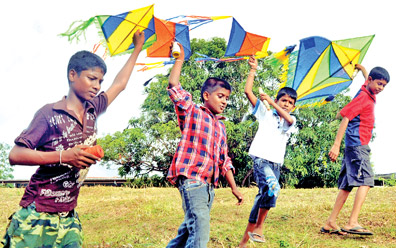
Flying kites is a popular pastime. Pictures by Saman Sri
Wedage |
Dubbed a symbol of freedom, adventure and spirit, flying kites has
been an eternal favourite leisure time among young and old alike. It is
an activity which bridges age gaps, ethnic groups and gender barriers.
The popularity of the kite is such, that today; one can see varieties of
kites available in the market.
|
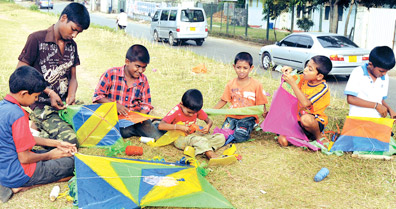
Making kites brings income |
Flat kites, bow kites, box kites, sled kites, sports kites, parafoil
kites and fighter kites are some of the most common types of kites in
the market. Kite flying is at its height in September because the
monsoon winds sweep across the coast of the island. A vibrant sky dotted
with a variety of colourful kites is a common sight these days,
especially if you take a walk along the road within sight of Galleface
Green.
The National Festival of Kites sores each year to encourage and build
the creativity of children and adults. This year's event is held to
coincide with World Tourism Day which falls on September 27. Celebrating
tourism and biodiversity, the all island kite festival and kite fancy
dress parade will be held at Kirala Kele, Matara, on September 26 and
27.
The event which boasts of energy and creativity is put together by
Sri Lanka Travel and Kite Sri Lanka.
|

Kite resembling
a bird |
"A lot of innovative creations have seen the light of day at past
festivals. Kites made out of sarees, palm leaves and bird feathers
highlight the power of creativity in the locals. This is not only a
crowd pulling event but one which will set the country in the world
map," said Events Manager Nomico Nidharshana.
|
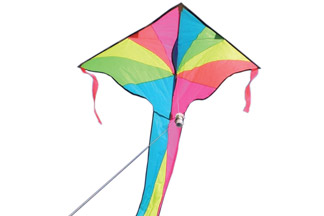
Colourful kite |
A special feature in this year's festival is the kites fashion
extravaganza. Nomico says that this is probably the first kites fancy
dress competition to be held in Asia. All the designs need take shapes
of kites. They need to possess the local touch. The competition will be
in two categories: debutants and experts.
The kites too should go along with the themes of national heritage
and biodiversity. National flags could be emblemed in them to bring the
essence of togetherness as well as to attract tourists. They can also be
used to promote some of the main tourist attractions in the country.
"We will be targeting the World Records in August next year by flying
10 000 kites in Galleface Green," Nomico stated adding that the
colourful event took off in 2008.
A perfect teaching tool, flying kites is a popular pastime with many
aspects. It is a traditional family pastime, an art form, a tradition
craft, science and a sport. So the next time someone tells you to go and
fly a kite, you can actually take the advice on a serious note!
Soaring through the years
Kites date back to as far as 3,000 years. They
first appeared as bamboo, silk and bridle versions in China with a
mystic and religious link. The earliest record of kite flying was in 200
B.C. When Chinese General Han Hsin of the Han Dynasty flew a kite over
the walls of a city he was attacking to measure how far his army would
have to tunnel to reach past the defenses.
|
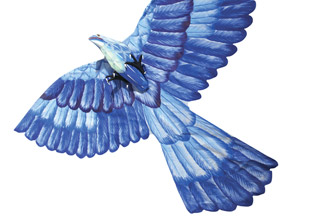
An unusual kite |
Knowing this distance his troops reached the inside of the city,
surprised their enemy, and were victorious.
|
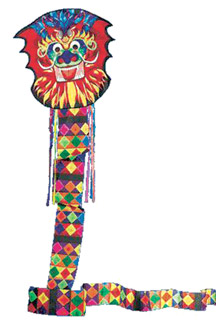
Dragon kite |
Kite flying was eventually spread by traders from China to Korea, and
across Asia to India. Each area developed a distinctive style of kite
and cultural purpose for flying them.
The kite was used as scientific experiments in the 19th century.
Benjamin Franklin used the kite to investigate atmospheric electricity.
American physicist and inventor Alexander Graham Bell too used kites
in his studies. In the 1890s box kites were used to transmit
meteorologic instruments aloft to measure the wind velocity,
temperature, barometric pressure, and humidity. Sir George Caley, Samuel
Langley, Lawrence Hargrave and the Wright Brothers' experiments
contributed to the development of the aircraft. Lawrence Hargrave was
lifted from the ground by a train of kites in 1894 and later in 1903
Samuel Franklin Cody actually crossed the English Channel on a vessel
towed by kites.
|
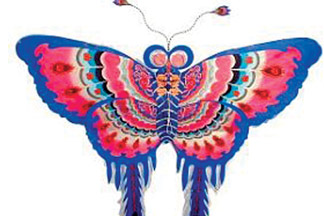
A Chinese kite |
In the 20th and 21st century they were used for military purposes.
Kites were used for lifting military observers to heights from which
they could observe the disposition of enemy forces. During World War II,
kites were also used as gunnery targets. |



